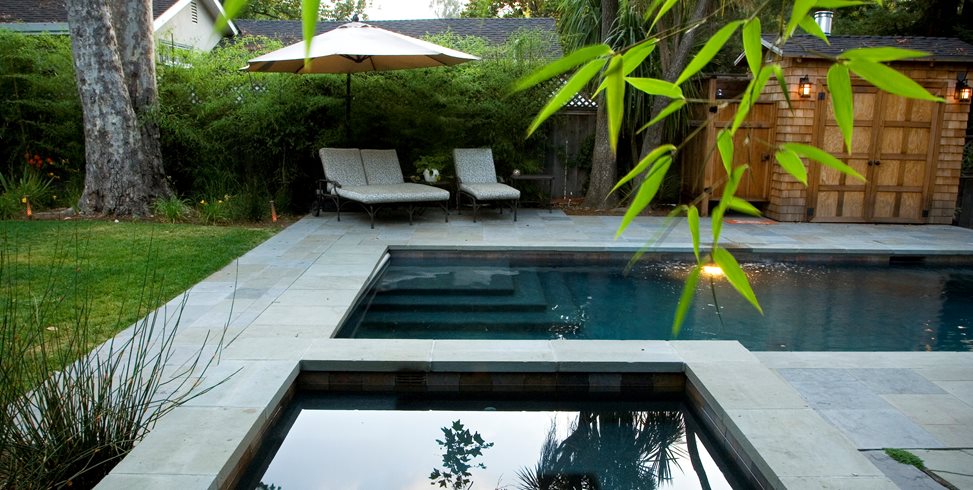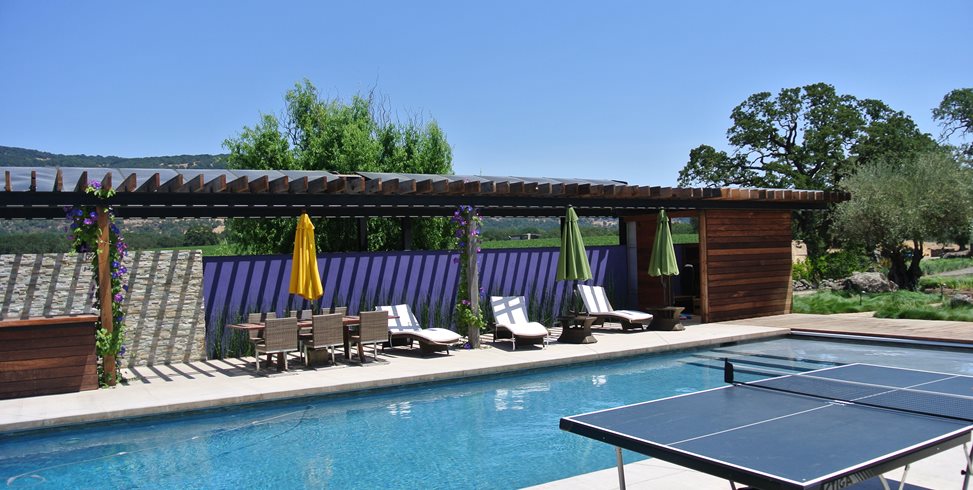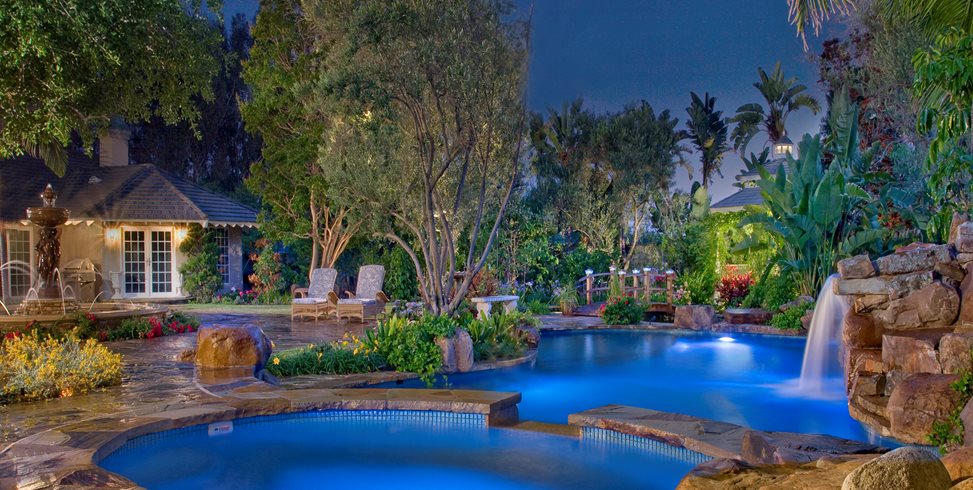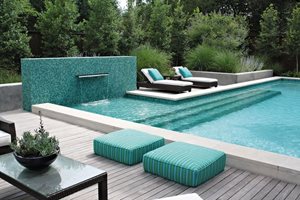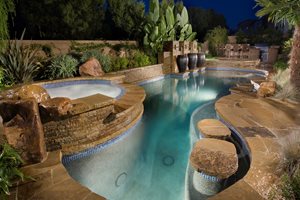Pool Coping
Compare poured concrete, stone, tile and precast coping unitsCoping is a term that describes the edge condition of a pool. Almost all pools shared the same precast concrete coping units before the 1970s when bullnose brick and new technology changed the way coping was made. As the features of our pools grew into a wide range of pool styles, these old coping stones were dropped in favor of more variable options.
Poured Concrete Cantilever
This pool coping was driven by innovations in poured concrete pool decks. It's goal was to pour the pool deck in one slab that would project out over the edge of the pool. This eliminated the step of setting the coping units first, then pouring the deck to meet the back edge. A poured in place coping as part of the deck was the best way to integrate exposed aggregate or stamped concrete patterns into the edge and paving. During the 1980s this was the cleanest most contemporary edge condition and remains an affordable and attractive solution for moderately priced pools.
Landscape architect Ive Haugeland of Shades of Green in the San Francisco Bay Area specializes in modern design. "We design either poured in place or precast coping. We try to make coping and paving look continuous with a poured cantilever coping. Problem is that pool contractors want them in two different pours to accommodate settling. My preference is a clean deck clear up to a clean waterline."
Tiled or Veneered Cantilever
A poured concrete cantilever edge is easily adapted to veneers of thin stone and tile. This was the primary way red clay tile was integrated into pools for Spanish style homes and waterline tile. Today thin stone veneer is the most popular cladding material for these edges. "Most of our work is cantilevered", says a Shea Alderete of Alderete Pools in southern California. "We do poured in place that's sand dusted and stained, and we're using travertine for high end for the clean stone look."
Solid Stone Coping
Today's high end pools are treated to an upscale coping of thick natural stone. This coping can be irregular to blend nicely with flagstone paving, adapting well to the irregular edges of natural pools and integrating nicely with rocks and boulders. Solid natural stone can be more rigidly cut for rectalinear pools and to serve decking laid with geometrically cut stone veneer paving. Key here is to choose coping stone finished in a way that matches or is most compatible with the decking material.
This is the preferred method of Cipriano Landscape, a luxury pool builder in New Jersey. "Most of our coping is natural stone," says Chris Cipriano. "We'll customize it by making a bit for our router to make it unique to that project. Our stone is set right onto the bond beam with 1.5 to 2 inches profile. Softer stone such as Indiana Limestone is porous, so we avoid that due to the effects of chlorine. We prefer dolomitic limestone because it's dense and impervious and makes a better choice overall. Nearly all our pools are done this way."
Precast Coping Units
Consider these the modern version of the old fashioned cast concrete coping units. This version of precast coping units offers a huge range of size, color and texture to suit more formal design. Unlike the original lip that flipped upward, these coping units are beautifully routed and tinted to fit virtually any pool color and materials palette. They are growing in popularity with the simple modern pools with their clean Spartan lines and industrial feel.
Brick also makes a fine coping. This traditional material is manufactured with a rounded bull nose to soften the corner of the coping and make it safer for children. This is the best choice for homes with existing brick facade, and the color range of brick allows a perfect match of bullnose coping to architectural brick on the house and in paving.

 Backyards
Backyards
 Front Yards
Front Yards
